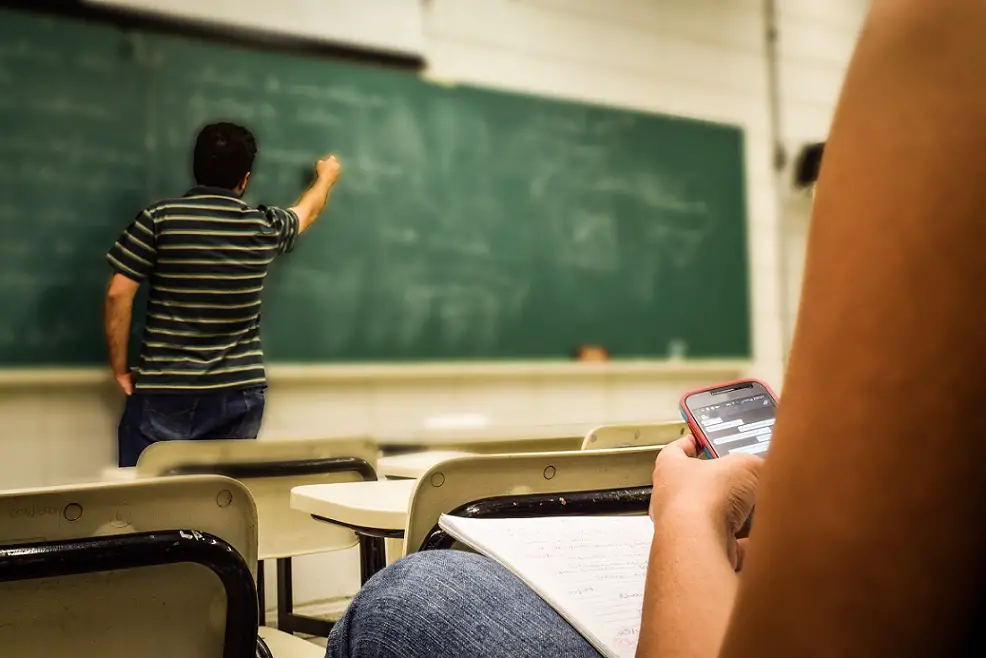Classroom management is a crucial aspect of education, ensuring an optimal learning environment for students. Over the years, numerous theorists have contributed valuable insights and theories to enhance classroom management practices.
In this listicle, we will explore 17 prominent classroom management theorists whose ideas have shaped modern education.
B.F. Skinner
B.F. Skinner, known as the father of behaviorism, made significant contributions to the field of classroom management. His theory focused on the use of rewards and punishments to shape student behavior effectively. Skinner believed that behavior is influenced by its consequences, and by manipulating these consequences, teachers can encourage desired behaviors and discourage undesirable ones.
Skinner’s theory of operant conditioning suggests that positive reinforcement, such as rewards or praise, can increase the likelihood of a behavior being repeated. Conversely, negative reinforcement, such as removing an unpleasant stimulus, can also strengthen desired behaviors. On the other hand, punishments, such as reprimands or loss of privileges, can decrease the likelihood of undesirable behaviors occurring again.
By implementing Skinner’s principles, teachers can create a positive and structured learning environment. They can establish clear expectations and rules, and provide immediate feedback and reinforcement when students exhibit desired behaviors. This approach helps students understand the consequences of their actions and motivates them to engage in positive behaviors.
However, it is important to note that Skinner’s theory has received criticism for its focus on external control and the potential for students to become dependent on rewards. Critics argue that intrinsic motivation and autonomy should also be fostered in the classroom.
In summary, B.F. Skinner’s emphasis on the use of rewards and punishments to shape student behavior has had a significant impact on classroom management practices. By understanding and applying his principles, teachers can create a positive and structured learning environment that promotes student engagement and success.
Jacob Kounin
Jacob Kounin, a prominent figure in the field of classroom management, emphasized the significance of teacher “withitness” and the effective management of transitions to maintain student engagement and prevent misbehavior. Kounin believed that teachers who possess “withitness” are aware of everything happening in the classroom and are able to respond promptly to any disruptions or distractions.
One key aspect of Kounin’s theory is the concept of overlapping. Overlapping refers to the ability of teachers to handle multiple tasks simultaneously, such as giving instructions while monitoring student behavior. By overlapping their actions, teachers can minimize downtime and keep students actively engaged in the learning process.
Another important aspect of Kounin’s theory is the management of transitions. Transitions occur when students move from one activity to another, such as transitioning from independent work to group work. Kounin emphasized the need for smooth and efficient transitions to prevent students from becoming disengaged or engaging in disruptive behavior during these periods of transition.
To effectively manage transitions, Kounin suggested the use of signals or cues to indicate the end of one activity and the beginning of another. These signals help students understand the expectations and facilitate a smooth transition. Additionally, Kounin emphasized the importance of clear and concise instructions during transitions to minimize confusion and maximize student engagement.
By implementing Kounin’s principles of “withitness” and effective transition management, teachers can create a classroom environment that promotes student engagement and minimizes disruptive behavior. Teachers who are aware of what is happening in the classroom and effectively manage transitions can maintain a positive and focused learning environment for their students.
William Glasser
William Glasser, a renowned theorist in the field of classroom management, made significant contributions with his introduction of choice theory. Glasser believed that students who feel connected to their learning are more motivated and well-behaved. He emphasized the importance of providing choices to students, allowing them to have a sense of autonomy and ownership over their education.
According to Glasser, when students are given the opportunity to make choices in their learning, they become more engaged and invested in the process. This sense of agency empowers students and fosters a positive attitude towards education. By offering choices, teachers can tap into students’ intrinsic motivation and create a more meaningful learning experience.
In addition to promoting choice, Glasser also emphasized the significance of building a positive teacher-student relationship. He believed that a strong connection between teachers and students is essential for effective classroom management. When students feel valued and respected by their teachers, they are more likely to be cooperative and exhibit positive behavior.
Glasser’s choice theory and emphasis on building relationships provide valuable insights for educators seeking to create a conducive learning environment. By incorporating choice and nurturing positive teacher-student relationships, teachers can enhance student motivation, behavior, and overall academic success. Implementing Glasser’s principles can lead to a more student-centered approach to education, where students feel empowered and engaged in their own learning journey.
Lee Canter
Lee Canter, a prominent figure in the field of classroom management, developed the assertive discipline method, which focuses on consistency, clear expectations, and consequences to establish a well-managed classroom. This approach emphasizes the importance of setting clear rules and guidelines for student behavior, and consistently enforcing them.
One key aspect of Canter’s method is the establishment of clear expectations. By clearly communicating the behavior that is expected from students, teachers can create a structured and predictable learning environment. This helps students understand what is acceptable and what is not, reducing confusion and promoting a positive classroom atmosphere.
Consistency is another crucial element of Canter’s approach. Teachers who consistently enforce the established rules and consequences send a message to students that their behavior has consequences. This consistency helps students understand the boundaries and expectations, and encourages them to take responsibility for their actions.
Canter’s assertive discipline method also emphasizes the use of consequences. When students fail to meet the established expectations, appropriate consequences are implemented. These consequences are designed to be fair and reasonable, and aim to teach students about accountability and the impact of their choices.
By implementing Canter’s assertive discipline method, teachers can create a well-managed classroom where students understand the expectations, feel secure, and are motivated to behave appropriately. This method provides a framework for teachers to establish a positive learning environment that promotes student success and engagement.
Haim Ginott
Haim Ginott, a renowned theorist in the field of classroom management, focused on creating a supportive and nurturing classroom environment through the use of positive reinforcement, empathy, and respect.
One key aspect of Ginott’s theory is the emphasis on positive reinforcement. By acknowledging and praising students’ positive behavior and achievements, teachers can motivate and encourage them to continue exhibiting desirable actions. This approach not only boosts students’ self-esteem but also reinforces the idea that their efforts are valued and appreciated.
In addition to positive reinforcement, Ginott highlighted the importance of empathy in the classroom. He believed that teachers should strive to understand and empathize with their students’ feelings and perspectives. By demonstrating empathy, teachers can create a safe and supportive space where students feel understood and validated. This fosters a sense of belonging and encourages open communication between teachers and students.
Respect is another fundamental element of Ginott’s theory. He advocated for treating students with respect and dignity, regardless of their age or academic abilities. By modeling respectful behavior, teachers set a positive example for students and promote a culture of mutual respect within the classroom. This not only enhances the teacher-student relationship but also cultivates a positive and inclusive learning environment.
By implementing Ginott’s theory, teachers can create a classroom atmosphere that promotes positive behavior, empathy, and respect. This approach not only enhances students’ academic performance but also contributes to their overall well-being and development.
Fredric Jones
Fredric Jones, a prominent figure in the field of classroom management, developed a theory that revolves around proactive strategies to maintain a well-managed classroom environment. Jones believed in the power of prevention, emphasizing the importance of implementing clear rules and routines to establish structure and order in the classroom. By setting expectations from the beginning, teachers can effectively manage student behavior and minimize disruptions.
One key aspect of Jones’ theory is the implementation of rules. He advocated for creating a set of clear and concise rules that outline expected behavior and consequences. These rules serve as a guide for students, helping them understand what is acceptable and what is not. By consistently enforcing these rules, teachers can establish a sense of discipline and create a positive learning environment.
In addition to rules, Jones emphasized the significance of routines. He believed that having structured routines in place helps students understand the flow of the day and reduces the likelihood of misbehavior. Routines provide a sense of predictability and stability, allowing students to focus on their learning without unnecessary distractions.
Furthermore, Jones highlighted the importance of praising positive behavior. He believed that by acknowledging and reinforcing desirable actions, teachers can motivate students to continue exhibiting positive behavior. This positive reinforcement not only boosts students’ self-esteem but also encourages a classroom culture that values and celebrates success.
By implementing Jones’ proactive classroom management strategies, teachers can create a structured and supportive learning environment that promotes positive behavior and enhances student engagement. Through the use of rules, routines, and positive reinforcement, teachers can effectively manage their classrooms and foster a conducive atmosphere for learning.
Rudolf Dreikurs
Rudolf Dreikurs, a prominent figure in the field of classroom management, believed in a democratic approach to maintaining discipline in the classroom. He emphasized the importance of mutual respect, responsibility, and cooperation between teachers and students. By fostering a sense of equality and collaboration, Dreikurs believed that teachers could effectively manage student behavior and create a positive learning environment.
One key aspect of Dreikurs’ theory is the concept of mutual respect. He believed that teachers should treat students with dignity and respect, and in turn, students should show the same respect towards their teachers and peers. By modeling respectful behavior, teachers can create a classroom culture that values and promotes positive interactions.
Responsibility is another crucial element in Dreikurs’ approach. He believed that students should take responsibility for their actions and the consequences that follow. By holding students accountable for their behavior, teachers can empower them to make better choices and learn from their mistakes. This sense of responsibility also helps students develop self-discipline and self-control.
Cooperation is the third pillar of Dreikurs’ theory. He advocated for collaborative problem-solving and decision-making within the classroom. By involving students in the decision-making process, teachers can give them a sense of ownership and responsibility for their learning environment. This collaborative approach fosters a sense of community and encourages students to work together towards common goals.
By implementing Dreikurs’ democratic approach to classroom management, teachers can create a positive and inclusive learning environment. Through mutual respect, responsibility, and cooperation, teachers can effectively manage student behavior and promote a culture of respect and collaboration in the classroom.
Thomas Gordon
Thomas Gordon, a renowned theorist in the field of classroom management, developed a method that focuses on promoting effective communication and conflict resolution skills among students. By involving students in decision-making and problem-solving within the classroom, Gordon believed that teachers could create a more harmonious and cooperative learning environment.
One key aspect of Gordon’s method is the emphasis on open and honest communication. He believed that teachers should actively listen to their students and encourage them to express their thoughts and feelings. By creating a safe space for students to communicate, teachers can foster a sense of trust and understanding, which can lead to better relationships and improved behavior.
Another important element of Gordon’s approach is involving students in decision-making. He advocated for giving students a voice in classroom rules and procedures, allowing them to have a sense of ownership and responsibility for their learning environment. By involving students in decision-making, teachers can empower them and promote a sense of autonomy and self-discipline.
Gordon also emphasized the importance of teaching conflict resolution skills. He believed that students should be equipped with the tools to resolve conflicts peacefully and respectfully. By teaching students how to communicate their needs and concerns effectively, teachers can help them develop problem-solving skills that can be applied both inside and outside the classroom.
By implementing Gordon’s method, teachers can create a classroom environment that values open communication, student involvement, and conflict resolution. This approach not only helps manage student behavior but also promotes the development of essential life skills that students can carry with them beyond the classroom.
Linda Albert
Linda Albert, a prominent figure in the field of classroom management, developed the cooperative discipline approach, which focuses on empowering students to become responsible decision-makers and fostering mutual respect within the classroom. This approach is centered around the idea that students should be actively involved in the management of their own behavior and the establishment of classroom rules.
One key aspect of Albert’s approach is teaching students the skills they need to make responsible decisions. By providing students with guidance and support, teachers can help them develop the ability to think critically and make choices that align with their values and goals. This not only promotes a sense of ownership and accountability but also encourages students to take responsibility for their actions.
Mutual respect is another fundamental principle of Albert’s approach. She believed that teachers should treat students with respect and dignity, and in turn, students should show respect towards their peers and teachers. By creating a classroom environment where respect is valued and practiced, teachers can foster positive relationships and a sense of community among students.
Albert’s cooperative discipline approach also emphasizes the importance of clear communication and conflict resolution. Teachers are encouraged to actively listen to their students and provide them with opportunities to express their thoughts and feelings. By teaching students effective communication skills and providing them with strategies to resolve conflicts peacefully, teachers can create a harmonious and inclusive learning environment.
By implementing Linda Albert’s cooperative discipline approach, teachers can create a classroom where students are actively engaged in their own learning, take responsibility for their behavior, and treat others with respect. This approach not only promotes positive behavior but also helps students develop essential life skills such as decision-making, communication, and conflict resolution.
Alfie Kohn
Alfie Kohn, a renowned advocate for progressive education, challenges traditional classroom management approaches by promoting a student-centered approach that prioritizes intrinsic motivation, cooperation, and critical thinking. Kohn believes that students are more likely to be engaged and motivated when they have a say in their learning and when their natural curiosity is nurtured.
One key aspect of Kohn’s approach is the emphasis on intrinsic motivation. He argues that rewards and punishments can undermine students’ intrinsic motivation to learn, as they focus on external factors rather than a genuine desire to understand and explore. Instead, Kohn suggests that teachers should create a supportive and stimulating environment that encourages students to pursue their interests and passions.
Cooperation is another fundamental principle of Kohn’s approach. He believes that collaborative learning experiences not only enhance students’ understanding of the subject matter but also foster important social and emotional skills. By working together in groups, students learn to communicate effectively, listen to different perspectives, and solve problems collectively.
Critical thinking is also at the core of Kohn’s approach. He encourages teachers to provide students with opportunities to question, analyze, and evaluate information rather than simply memorizing facts. By engaging in critical thinking, students develop higher-order cognitive skills and become active participants in their own learning.
By implementing Alfie Kohn’s student-centered approach, teachers can create a classroom environment that promotes intrinsic motivation, cooperation, and critical thinking. This approach not only enhances students’ engagement and learning outcomes but also prepares them for success in an ever-changing world.
Spencer Kagan
Spencer Kagan, a prominent figure in the field of classroom management, advocates for the use of cooperative learning structures to foster active student engagement and promote positive interactions among peers. Kagan believes that when students work together in a collaborative and supportive environment, they not only enhance their understanding of the subject matter but also develop important social and emotional skills.
One key aspect of Kagan’s approach is the use of structured cooperative learning activities. These activities are designed to ensure that every student in the group has an active role and contributes to the learning process. By assigning specific roles and responsibilities, such as a facilitator, recorder, or timekeeper, Kagan ensures that each student is actively engaged and accountable for their learning.
Another important element of Kagan’s approach is the emphasis on positive interactions among peers. Kagan believes that when students feel valued and respected by their classmates, they are more likely to actively participate and take risks in their learning. To promote positive interactions, Kagan encourages teachers to create a supportive classroom culture where students celebrate each other’s successes, provide constructive feedback, and collaborate effectively.
By implementing Spencer Kagan’s cooperative learning structures, teachers can create a dynamic and inclusive classroom environment that promotes active student engagement and positive peer interactions. This approach not only enhances students’ academic achievement but also cultivates important social and emotional skills that are essential for success in the 21st century.
Jane Nelsen
Jane Nelsen, a renowned educator and psychologist, is known for her positive discipline theory, which focuses on fostering self-discipline and meaningful connections in the classroom. Nelsen believes that discipline should not be about punishment or control, but rather about teaching students valuable life skills and promoting a positive learning environment.
One key aspect of Nelsen’s approach is the emphasis on mutual respect. She believes that when teachers and students treat each other with respect, it creates a safe and supportive atmosphere where students feel valued and motivated to learn. By modeling respectful behavior and encouraging open communication, teachers can establish a foundation of trust and create a positive classroom culture.
Another important element of Nelsen’s theory is problem-solving. Instead of imposing consequences, Nelsen encourages teachers to involve students in finding solutions to conflicts and challenges. This approach not only empowers students to take responsibility for their actions but also helps them develop critical thinking and problem-solving skills that are essential for their future success.
Furthermore, Nelsen emphasizes the power of encouragement. She believes that by acknowledging students’ efforts and achievements, teachers can boost their self-esteem and motivation. Encouragement helps students develop a growth mindset and fosters a love for learning.
By implementing Jane Nelsen’s positive discipline theory, teachers can create a classroom environment that promotes self-discipline, meaningful connections, and a love for learning. This approach not only enhances students’ academic performance but also equips them with important life skills that will benefit them beyond the classroom.
Harry Wong
Harry Wong, a prominent educator and author, is widely recognized for his practical strategies in classroom management. Wong emphasizes the significance of establishing routines, clear expectations, and building positive teacher-student relationships.
One of Wong’s key principles is the establishment of consistent routines. He believes that having predictable and structured routines helps students feel secure and know what is expected of them. By implementing consistent procedures for tasks such as entering the classroom, transitioning between activities, and completing assignments, teachers can create a sense of order and minimize disruptions.
In addition to routines, Wong stresses the importance of setting clear expectations. He believes that students need to know exactly what is expected of them in terms of behavior, academic performance, and classroom participation. By clearly communicating these expectations and consistently reinforcing them, teachers can create a focused and productive learning environment.
Furthermore, Wong emphasizes the value of building positive teacher-student relationships. He believes that when students feel a genuine connection with their teachers, they are more likely to be engaged and motivated to learn. Wong encourages teachers to take the time to get to know their students, show interest in their lives, and provide support and encouragement.
By implementing Harry Wong’s practical strategies, teachers can create a well-managed classroom environment that promotes student engagement, academic success, and positive relationships. These strategies not only contribute to a more effective learning experience but also help students develop important life skills such as responsibility, self-discipline, and respect.
Robert Marzano
Robert Marzano, a renowned educational researcher, has made significant contributions to the field of classroom management. His research-based approach emphasizes the importance of effective classroom instruction and management techniques in creating environments that foster student achievement.
Marzano’s work highlights the significance of using evidence-based practices to enhance teaching and learning. He emphasizes the use of instructional strategies that have been proven to be effective through rigorous research and analysis. By incorporating these strategies into their teaching, educators can maximize student engagement and promote a deeper understanding of the content.
In addition to instructional techniques, Marzano also emphasizes the importance of classroom management in creating a conducive learning environment. He advocates for the establishment of clear expectations and procedures, as well as the implementation of positive behavior reinforcement strategies. By setting high expectations for behavior and consistently reinforcing positive actions, teachers can create a structured and supportive classroom environment that promotes student success.
Marzano’s research also highlights the importance of formative assessment and feedback in promoting student growth. He encourages teachers to regularly assess student understanding and provide timely feedback to guide their learning. By using assessment data to inform instruction and provide targeted support, teachers can help students make continuous progress toward their learning goals.
In summary, Robert Marzano’s research-based approach to classroom management emphasizes the integration of effective instructional strategies, clear expectations, positive behavior reinforcement, and formative assessment. By implementing these techniques, educators can create engaging and supportive learning environments that optimize student achievement.
Richard Curwin
Richard Curwin, an influential figure in the field of classroom management, focuses on the development of resilience, responsibility, and self-control in students. His theory centers around the use of logical and natural consequences as a means to achieve these goals.
Curwin believes that by allowing students to experience the consequences of their actions, they can learn valuable life lessons and develop a sense of responsibility for their choices. Logical consequences are directly related to the behavior exhibited, while natural consequences occur naturally as a result of the behavior. By implementing these consequences consistently and fairly, teachers can help students understand the cause-and-effect relationship between their actions and the outcomes.
In Curwin’s approach, the emphasis is not on punishment but on teaching students to take ownership of their behavior and make better choices. By providing opportunities for reflection and discussion, teachers can guide students in understanding the impact of their actions on themselves and others. This approach promotes self-control and empowers students to make positive changes in their behavior.
Furthermore, Curwin’s theory recognizes the importance of building resilience in students. By allowing them to face challenges and overcome obstacles, teachers can help students develop the skills and mindset needed to bounce back from setbacks and persevere in their academic and personal lives.
In summary, Richard Curwin’s theory highlights the significance of fostering resilience, responsibility, and self-control in students through the use of logical and natural consequences. By implementing these strategies, educators can empower students to take ownership of their actions, make better choices, and develop the resilience needed to succeed in and out of the classroom.
Linda M. Albert and Allen N. Mendler
Albert and Mendler’s theory of “The Resilient Educator” is a valuable approach that focuses on the well-being and mindset of teachers to enhance their classroom management skills. This theory recognizes the importance of self-care and self-reflection for educators, understanding that teachers who prioritize their own well-being are better equipped to create a positive and effective learning environment.
One key aspect of “The Resilient Educator” theory is the emphasis on self-care. Teachers are encouraged to take care of their physical, mental, and emotional health, recognizing that their well-being directly impacts their ability to manage their classrooms. By prioritizing self-care, teachers can reduce stress, maintain a positive attitude, and have the energy and resilience needed to handle the challenges that arise in the classroom.
Self-reflection is another crucial component of this theory. Albert and Mendler advocate for teachers to regularly reflect on their teaching practices, interactions with students, and classroom management strategies. By engaging in self-reflection, teachers can identify areas for improvement, adjust their approaches, and continuously grow as educators. This self-awareness allows teachers to better understand their strengths and weaknesses, leading to more effective classroom management techniques.
A positive mindset is also highlighted in “The Resilient Educator” theory. Teachers are encouraged to cultivate a positive attitude towards their students, their work, and the challenges they may face. By maintaining a positive mindset, teachers can create a supportive and encouraging classroom environment that fosters student engagement and cooperation.
In conclusion, Albert and Mendler’s theory of “The Resilient Educator” emphasizes the importance of self-care, self-reflection, and a positive mindset in teachers to enhance their classroom management skills. By prioritizing their own well-being, engaging in self-reflection, and maintaining a positive attitude, educators can create a conducive learning environment and effectively manage their classrooms.
Charles Wolfgang
Charles Wolfgang’s contribution to classroom management is evident in his book, “Solving Discipline and Classroom Management Problems.” This comprehensive resource offers teachers a wealth of classroom management models and methods to effectively address a wide range of challenges they may encounter.
One key aspect of Wolfgang’s approach is the emphasis on proactive strategies. He encourages teachers to establish clear expectations and routines from the beginning of the school year, creating a structured and predictable learning environment. By setting these expectations early on, teachers can prevent many discipline issues before they even arise.
Another important aspect of Wolfgang’s approach is the focus on positive reinforcement. He advocates for the use of praise and rewards to motivate and encourage students. By recognizing and reinforcing positive behavior, teachers can create a positive classroom climate where students feel valued and motivated to succeed.
Additionally, Wolfgang emphasizes the importance of building positive relationships with students. He encourages teachers to get to know their students on a personal level, showing genuine interest and care. By fostering positive relationships, teachers can establish trust and rapport, which can greatly enhance classroom management.
Furthermore, Wolfgang’s book provides practical strategies for addressing specific discipline and behavior problems. From dealing with disruptive students to managing conflicts, teachers can find effective techniques and approaches to handle various situations.
In summary, Charles Wolfgang’s book, “Solving Discipline and Classroom Management Problems,” offers teachers a valuable resource filled with classroom management models and methods. By implementing proactive strategies, utilizing positive reinforcement, building positive relationships, and employing practical techniques, teachers can effectively manage their classrooms and create an optimal learning environment.
Conclusion
These 17 influential classroom management theorists have significantly contributed to the field of education, providing valuable insights and strategies to create a positive and engaging learning environment. Their theories continue to shape modern education and offer effective techniques for teachers to enhance classroom management.
One key takeaway from these theorists is the importance of proactive strategies. By establishing clear expectations and routines from the beginning of the school year, teachers can create a structured and predictable learning environment. This helps to prevent many discipline issues before they even arise, allowing for a smoother and more focused classroom experience.
Another important aspect emphasized by these theorists is the use of positive reinforcement. By utilizing praise and rewards, teachers can motivate and encourage students to exhibit positive behavior. This not only creates a positive classroom climate but also helps to foster a sense of value and motivation among students.
Additionally, these theorists highlight the significance of building positive relationships with students. By getting to know students on a personal level and showing genuine interest and care, teachers can establish trust and rapport. This, in turn, enhances classroom management as students feel more comfortable and engaged in the learning process.
In conclusion, by considering the principles of these influential classroom management theorists, educators can cultivate a conducive atmosphere for optimal student growth and success. Implementing proactive strategies, utilizing positive reinforcement, and building positive relationships are key elements in creating an effective and engaging learning environment.














